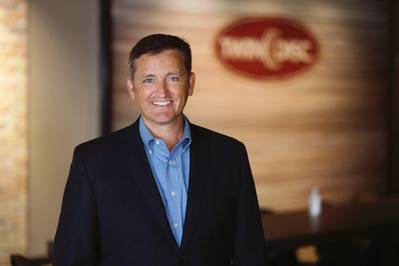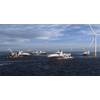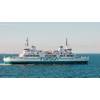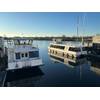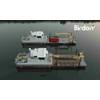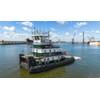Interview: John Batten, CEO, Twin Disc
How have major events such as the U.S./China trade war, oil price fall and COVID-19 impacted Twin Disc’s commercial marine business to date, and what adjustments have you made in response?
These are the three things that I’ve been highlighting in employee communications and with investors over the last few months. For us, COVID was just the third punch after the other two. China is typically our second largest market after the U.S., and we lost lots of orders to our competitors as the trade war started to affect us. It’s rebounding a little, but it definitely impacted our sales into China. The Russia/OPEC oil price war didn’t help either. Offshore has been struggling for a few years, and the oil war killed any momentum and certainly put the hurt on our onshore business, but that stabilized too.
We had been in a cost containment mode prior to COVID, so we were already doing some things to reduce our costs and restructure. We were ready and reacted quickly, but some of our customers and suppliers didn’t, and that—besides getting everyone who could work from home to do so, and trying to figure out how to work safely in the shop—was by far the top thing that kept us up at night. What supplier was going to be able to deliver? Who was going to be able to deliver you product? And who was going to be open to accept delivery and pay for our products? It was four to six weeks of sleepless nights.
My professional career spans 25 years, and I witnessed the early ’80s at Twin Disc and saw the oil and gas crisis then. This felt like that back in January/February, but once COVID hit, I’ve never seen so many things come together. This is truly a unique cycle in my lifetime, and probably in a few generations.
What were some of COVID-19’s effects in the commercial marine market?
Some of the markets that had been the most resilient were the inland market in the U.S. and Europe, as well as some of the coastal markets in Asia. Except for oil and gas, the economy was doing fairly well. We saw a lot of rail traffic and a lot of shipping on the rivers, and once COVID and the lockdown happened, that idled a lot of vessels and other assets while people tried to determine what was going to happen. That uncertainty postponed some new construction as well as retrofits and repairs. And that’s the biggest thing that we’ve seen that’s hit that commercial inland workboat market is a step drop in aftermarket parts and rebuild, and some delaying of projects. Now, thankfully, we’ve seen that come back. But that was the dead cat bounce of COVID-19 back in the March, April, May timeframe. Things responded quickly and everything got back to normal, but then people are wondering, “Do I really need to invest in a repair or rebuild, or should I just wait and see?” Through the summer we saw a lot of waiting to see what was going to happen, and thankfully it’s picked up a little bit here in the last few weeks.
How do you see the health of the industry today? Where are you looking for opportunities?
The strongest part of the commercial marine is still tied to the economy, just moving goods up and down through our river system, whether it’s here, in Europe or in Asia. The market has been resilient, and that’s one of the reasons we were attracted to Veth, because we’re seeing a growing number of these applications going to azimuth thrusters and potentially some hybrid or electric applications. We are looking for any and all applications that we can in that space, but particularly in the technology shift to the azimuth thrusters. More and more, we’re seeing that as the future in the horsepower range. We’re not turning away any application, certainly, but we’re focusing on the technology shift and making sure that we’re ready.
 The Veth Hybrid Drive combines proven quality and technology with the latest hybrid insights. Options include two drives, diesel-direct or diesel-electric, or a combination of both. This enables the use of a particular drive within the portion of the power curve where the efficiency is most favorable. (Image: Twin Disc)
The Veth Hybrid Drive combines proven quality and technology with the latest hybrid insights. Options include two drives, diesel-direct or diesel-electric, or a combination of both. This enables the use of a particular drive within the portion of the power curve where the efficiency is most favorable. (Image: Twin Disc)
Looking at your present commercial marine orderbook, which products have been in highest demand?
It would be our deep case transmissions—in that 800 to 1,500 horsepower range, a couple toward 2,000—and the controls here in North America. And then in Europe, it’s the Veth thrusters. It seems like the European market shut down quicker but also rebounded quicker, so the demand at Veth came back quicker than it did here in North America. And so their thrusters for the European inland market have been pretty strong. Their core Northern European market had a pause but has come back relatively well.
In addition, I’m starting to see the shift here in the U.S. to be more open to hybrid or electric, like in the case of the new Niagara Falls vessels for Maid of the Mist. People are looking to do things, and I think we would have seen that shift sooner, but it’s kind of hard to do a lot of these projects when everyone’s working remotely. Hopefully as we get back to a more normal work environment these things will start to happen more quickly.
You mentioned the Veth acquisition. What were the drivers that led Twin Disc toward the acquisition, and how has Veth fit in with your portfolio so far?
We saw the azimuth thruster coming down the horsepower curve into what we would consider more traditional deep case marine transmissions, and we knew that we had to have a product line there. Typically, they were above our horsepower range that we currently sell, but we saw it coming down to lower horsepower.
And then the question was whether we could find a suitable partner that was for sale versus developing it ourselves. We make gears, we do machine castings, we do propellers. But we found Veth, which was the perfect size for us, and they fit very nicely: same horsepower range as us, and we shared a lot of customers. But one thing that really drove us was their control system and the amount of work that they had already done in the hybrid space. We really were able to leverage the controls work that they had already done into our standard marine transmissions. So, once we added the master clutch — which basically makes our marine transmission hybrid ready—we didn’t have to do nearly the amount of controls development that we would have without Veth.
So, we gained another engineering team and a very strong sales team in Europe. Their market had historically been 95% Europe; they didn’t really have extensive representation outside of Europe. And we’re very strong in North America, South America and Asia, so it fit really well, and we could not be happier with how it’s gone with the acquisition so far.
And we’ve had quite a few notable projects to date: towing companies in the Midwest, applications in the Gulf Coast in and the Northeast. The one that’s getting the most press right now is the two electric tour boats for Maid of the Mist at Niagara Falls. ABB did the motors and the inverters, and we did the thrusters. I think you’ll see plenty more come about.
It feels like it’s been a long time coming, but hybridization seems to be picking up momentum here in the U.S. How do you see the future in this area? And what’s Twin Disc’s role and goals in this transition?
This is the hard part and this is why I think you see it taking off slowly. Marine, off-highway, construction and oil and gas are not like automotive where Tesla or Toyota, or Ford or GM can design a hybrid system for a platform of vehicles. We just went through an internal presentation on one industrial application, and it’s designing a new system. Best case, they’ll build 10 of them a year. And that’s what we’re seeing in marine. You’re starting at square one for each project. You get better at it, but there’s no one company that can supply everything, like for Maid of the Mist, like for a tugs project we did for Great Lakes Towing. It is a consortium of partners making it happen. And that’s part of the reason why you’re seeing it’s not taking off as quickly as in some other markets is because there are more independent players who traditionally haven’t come together, who are doing so now to make things happen. And I see the whole process is getting better and it’s becoming more refined.
Lots of boat builders, fleet operators, they’re designing one project to see how it goes and what the acceptance is in the market before they take it to the next level. Whether it’s Great Lakes Towing, Ingram Barge or whomever, the big customers are looking at how to do it and then see if it’s something that the market will accept before they do a general adoption. Will they be able to get the same day rate, etc.?
But I’m optimistic. I can’t tell you another time in my career when applications are more interesting and intellectually stimulating than right now trying to convert a diesel only fleet into options. It’s a paradigm shift to get to do things differently. You get to design new things, solve more problems. I feel like it’s been 25 years in the making for me to get to this point where the industry will start to change dramatically in the next few years. There’s no doubt about it. And I don’t think that’s happened in the previous 60 years. Maybe you could argue electronic controls and dynamic positioning would be the closest thing to the revolution that you’re going to see in the marine market.
Why have electric and hybrid vessels caught on more quickly in Europe than in the U.S.?
A lot of it has been political driving for lower emissions in and around port. It’s also economic. Fuel is more expensive in Europe. Electricity is also a lot more expensive in Europe, but if they can do it with renewables and have the right incentives, I think that is also why it’s taken off more. And a lot of the vessels in Europe are not point to point; they come back to the same place, so they can weather they can recharge. They’re generally smaller vessels with less horsepower, so they can experiment a little bit more at a lower cost point.
But every month there are more projects than there were the month before. You can definitely see the momentum building elsewhere in the market. And I see a lot more activity for us with sightseeing and tourist type vessels pushing the envelope on electric and hybrid and trying to have the lowest possible carbon footprint. So, I think we’ll see a lot of firsts. Like Maid of the Mist, you’re going to see that in areas that you may not have seen it before. They’re going to be driving the technology paradigm.
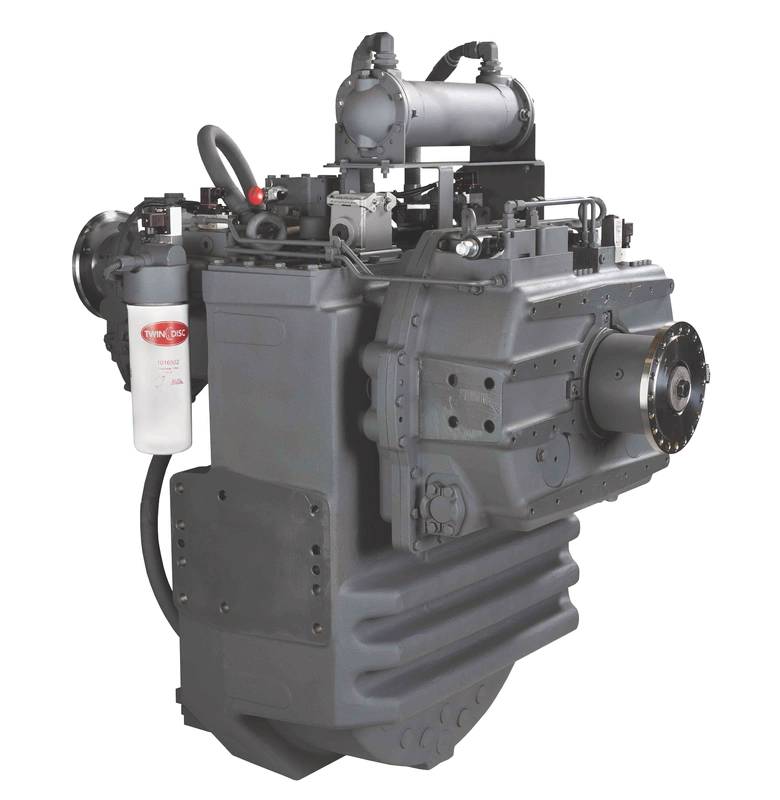 Twin Disc hybrid-ready marine transmissions feature a power-take-in (PTI) for the electric motor on the back of the input shaft, offering all the benefits of QuickShift technology plus power generation while the vessel is underway on diesel power, even in neutral. In full electric propulsion mode, a master clutch, integrated into the marine transmission, is used to disconnect the diesel engine. (Image: Twin Disc)
Twin Disc hybrid-ready marine transmissions feature a power-take-in (PTI) for the electric motor on the back of the input shaft, offering all the benefits of QuickShift technology plus power generation while the vessel is underway on diesel power, even in neutral. In full electric propulsion mode, a master clutch, integrated into the marine transmission, is used to disconnect the diesel engine. (Image: Twin Disc)
Jumping back to mergers and acquisitions, when you look at the market do you see areas for further consolidation?
I think we will see some shaking out in these partnerships that are developing hybrid systems. Perhaps engineering companies being consolidated into larger manufacturing companies, probably some consolidations in the customer area, and you could see some in the manufacturing space.
We are always looking for the right fit, but it’s changed a little bit. For us, what we’d be looking for in the marine space is what’s going to make us a better solution provider to someone who wants to do hybrid vessels and electric vessels. Not necessarily what can we provide more on mechanical product, but what can we provide more in technology and services. Anything to be a better partner in engineering and project management and make sure that you get all the components that you need. Someone who just makes mechanical components probably wouldn’t be on the list anymore. The market is changing, and people are looking for someone to help them provide more of the propulsion package, controls and services that they need, not just mechanical parts.
Do you see an appetite in the market for new products, and is Twin Disc planning to roll out anything new in the next year or so?
I would say product line extensions, mechanical products that we currently make, whether it’s marine transmissions thrusters, propeller size or control systems for our surface drives.
Our R&D is focused on being the best provider and reliable partner that we can in this push to hybridization and electrification. A lot of our time is being spent on developing those interfaces with electric motor companies, with other control companies, with GPS companies. A lot more product development in the controls area and interface area to make sure that we can play in the plug and play environment as it moves forward.
Please give an in-depth look at a recent project you find especially noteworthy or gratifying.
I would go back to the two that I mentioned: The Great Lakes Towing tugs and Maid of the Mist tour boats. Both of those are focal points for their respective markets. I think there’s no reason now that when people look at Maid of the Mist, that there is a point to point tourists, or ferry type application that it can’t be electric or it can’t be hybrid with a very small internal combustion engine. I think that is the future of vessels like that, especially in heavily populated, dense urban areas. There’s no reason we can’t do that.
The Great Lakes project was truly a team effort between MTU, Logan, Twin Disc and Great Lakes. It shows how one company didn’t have all the answers, but when we sat down around a table how we brought a decades old philosophy of diesel engines—marine transmission conventional propeller shaft—how we kept the conventional propeller shaft, but made it truly a very good hybrid application that rivals a tug z-pellers. It is a fantastic tug, and that opens up opportunities for people who have a fleet of conventional tugs. The option there is to be able to convert to hybrid without having to spend all the money to go to thrusters. I’m really proud of both of those.
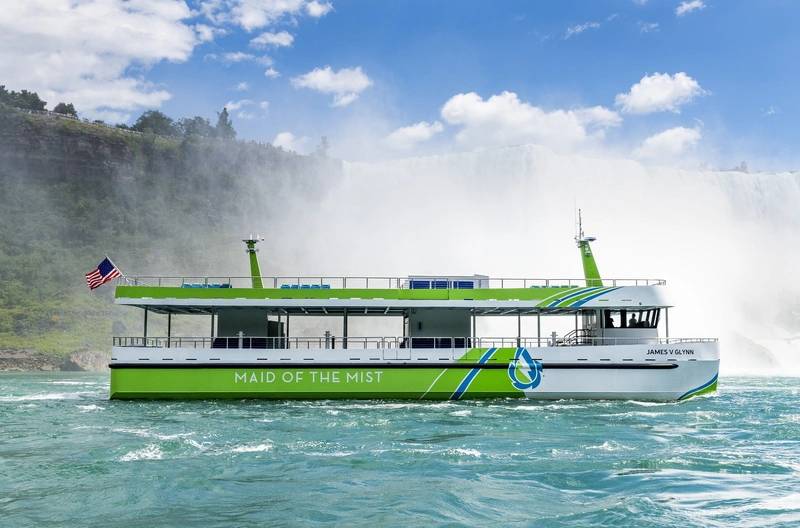 Two aluminum catamaran tourist ferries equipped with two VL-200 L-drives and controls from Veth Propulsion by Twin Disc. The utilization of Veth’s high-efficient electric driven thrusters powered from Li-ion batteries storing hydroelectric energy sourced from the gorge of the Niagara Falls, makes Maid of the Mist the first zero emission all-electric passenger vessel in North America.
Two aluminum catamaran tourist ferries equipped with two VL-200 L-drives and controls from Veth Propulsion by Twin Disc. The utilization of Veth’s high-efficient electric driven thrusters powered from Li-ion batteries storing hydroelectric energy sourced from the gorge of the Niagara Falls, makes Maid of the Mist the first zero emission all-electric passenger vessel in North America.
(Photo: ABB)
I often hear in this industry that many operators don’t want to be the first mover on any new technology. So, would you say those two applications open doors for others who might want to try the technology but don’t want to be first?
Absolutely. It’s one thing I’ve noticed about the marine market that is different from others. We’ve seen quite a bit that people will watch and see what’s been done, and if it works then it’s a race to be second. There have been a lot of entrepreneurs and inventors in the marine space who have great ideas on paper, but once they put it on water and it doesn’t work people are glad they didn’t chase them right away.
But I think both those applications highlight that a new way of doing things is possible. And what I really like about the Great Lakes application is that it shows we can give you the perfect hybrid performance and you don’t have to completely reinvent your vessel. We can do it with existing components.
In general, what would you say is your top goal as Twin Disc CEO, and what are you doing to make sure you achieve it?
Over the last 20 years, the momentum and the pull dragged us more and more into oil and gas, and we became much more dependent on that market than we had in the past. And so, our goal is not to leave oil and gas, but to diversify and grow in other areas so that the oil and gas cycles, whether it’s offshore or onshore, don’t affect us as much as they are. We have to have product development outside of oil and gas. And Veth really jump-started us into diversifying away from oil and gas because they had very little involvement in it. We have product development in industrial and certainly developing the hybrid and electrification product lines for projects like Maid of the Mist and Great Lakes Towing.
The other thing we have to do is lower our cost structure and look at our assets, whether it’s machine tools or facilities, and determine whether they’re really adding value and if we can do without them. We’re opening a facility in Lufkin, Texas where our industrial business will be going after leaving Racine, Wis., and we’re looking at selling our corporate headquarters here. With the work from home shift and some of the restructuring we’ve done, we have two other facilities in the immediate area, meaning we can consolidate.
We want to be a better performing company in both the top and the bottom of the cycle. And this cycle—the three-headed monster we touched on earlier—has been unlike anything we’ve seen. I would say it’s a combination of the early ’80s and the Great Depression. We’re rationalizing a lot of what we do and some of the paradigms that we’ve held and challenging them to see if we can operate differently going forward.
And what would you count as your greatest challenge, and what are you doing to address it?
The greatest challenge is to stay up on the technology. It’s our greatest opportunity and our greatest challenge to make sure we are one of the preferred partners in all of our markets, not just marine. As things go to electrification and hybridization, we aim to make sure that we are an integral part of that and a very reliable provider. These things are changing very quickly. We’ve been talking about hybrid for a long time, and it didn’t move much, but now we’re starting to see it move.
Also, we’ve had a lot of retirements and some restructuring in the last six months during the pandemic, and we don’t know how much longer the work from home model will continue. It’s easier to maintain a culture, and a team, working in the same office when you’ve had a chance to meet and get to know colleagues in person. Can you replace the people that have retired, build a team and maintain your culture when everything is remote? That is a challenge. It’s meeting the things that we need to do strategically, but maybe not being able to do it in the way we had before where we can all sit around the table and brainstorm. Working remotely and trying to team-build are things that we weren’t talking about last year when we presented our strategic plan, but they are at the top of the list on our plan to the board for December.


